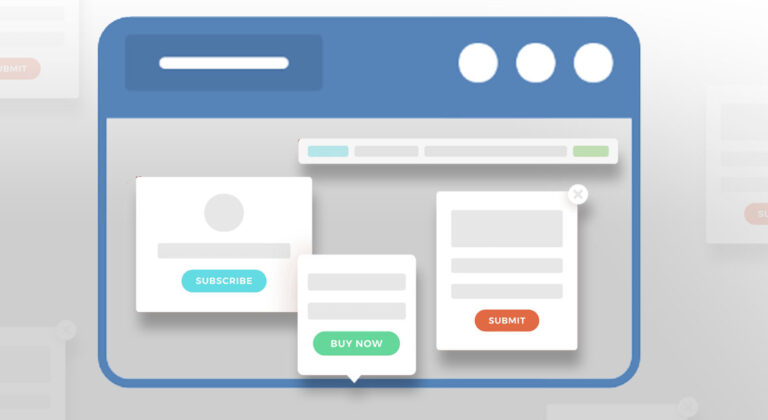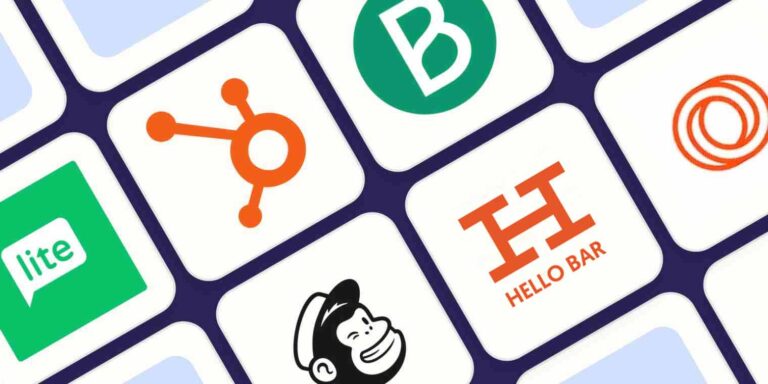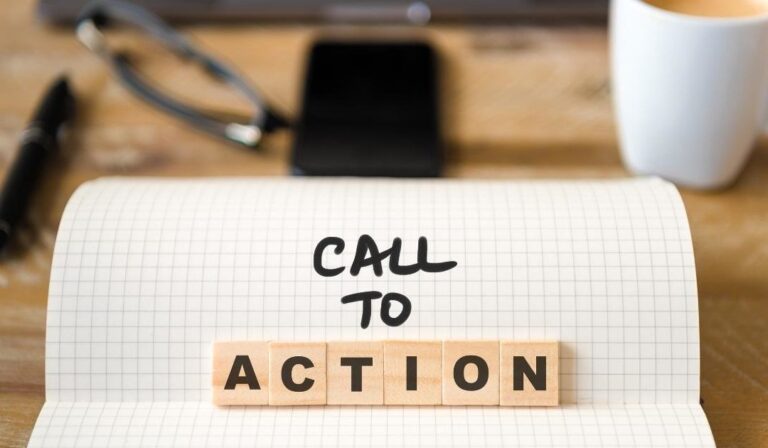Converting Marketing Leads into Sales Leads: 7 Expert Tips

I hope you enjoy this blog post. If you want Hello Bar to grow your leads, click here.
Author:
Ryan Bettencourt
Published
August 1, 2024

Every day, countless potential customers are online, searching for the products and services they need. As they browse and explore, it’s crucial for business owners and marketers to capture and retain their attention.
However, the challenge lies in converting these marketing leads into sales leads.
What does it take to reach that goal? What exactly is a sales qualified lead, and how can you develop an effective strategy to improve your conversion rates?
Additionally, what best practices can you implement to optimize your efforts?
In this post, we’ll share tips and best practices that can help you improve your results.
Even if you’re just starting or want to fine-tune your approach, this post has practical insights to help you turn leads into sales.
Let’s start with the basics.
What are Sales Qualified Leads?
An SQL represents a prospect who has progressed toward making a purchase.
Unlike earlier-stage leads, SQLs exhibit a clear intent to buy. They demonstrate this intent through meaningful interactions with your sales team or by engaging in product demonstrations.
What sets SQLs apart is their heightened level of engagement. These prospects recognize a need for your product or service and see it as a potential solution. They also have the authority to make purchasing decisions.
SQLs vs. MQLs: Key Differences in the Sales Funnel
To effectively manage your lead generation strategy, it’s important to differentiate between SQLs and Marketing Qualified Leads (MQLs).
Both types of leads occupy distinct stages within the sales funnel and indicate varying levels of readiness to become customers.
You’ll generally find MQLs at the top of the funnel. You can often generate these leads through marketing initiatives, such as website interactions, whitepaper downloads, or webinar registrations.
In contrast, SQLs are further along in their buying journey. These leads have engaged with your marketing materials and shown a more profound interest, often by requesting a product demo or a sales quote.
Lead Conversion Process: 9 Steps to Follow
Converting leads into customers can feel daunting, but it doesn’t have to be.
At its core, the goal is simple: turn potential clients into paying customers. Every action you take should align with this objective.
Let’s look at the steps in this process, which you can execute via various channels.
Step 1: Make the Initial Contact
The first step in converting marketing leads into sales leads is to contact them. A prompt follow-up can increase your chances of conversion.
Ensure you create a positive impression when you make that initial contact. You only have one chance to do this, so be prepared, polite, and concise.
Therefore, tailor your message to make the lead feel valued and special, steering clear of generic, automated responses.
You May Also Like:
- How to Build an Email List From Scratch: Start-to-Finish Guide
- 650+ Power Words List to Insanely Boost Conversions and Sales
Step 2: Qualify the Lead
Understanding the quality of each lead is vital for your success.
For instance, let’s say you’re selling a fitness app. A lead who’s downloaded multiple workout guides and signed up for your free trial is a hot prospect.
They’re clearly interested and have engaged with your business. On the other hand, someone who simply signed up for your newsletter might be curious but not quite ready to commit.
To effectively qualify leads, establish a criteria to help you assess their likelihood of converting. Consider factors such as their pain points, budget, and engagement with your brand.
Step 3: Get to Know Their Needs
Personalization goes beyond just addressing the lead by name; it involves understanding needs and challenges.
Engage them in conversations to uncover what they hope to achieve with your product or service. This insight will enable you to tailor your sales pitch effectively, making it more relevant and compelling.
Step 4: Present the Solution (Focus on Benefits, Not Features)
Once you understand the lead’s needs, it’s time to present your solution. Focus on how your product or service can address their specific challenges or improve their situation.
Use clear, straightforward language and emphasize the benefits they’ll gain, such as increased efficiency or reduced stress.
Step 5: Use Lead Scoring Process
Implement lead scoring and qualification strategies to ensure your conversion efforts are effective. This involves assessing the “warmth” of your leads—how engaged and interested they are.
Avoid pushing for a sale too soon, as it can erode trust. Instead, focus on nurturing leads based on their level of interest and readiness to buy.
Step 6: Keep Your Sales Content up to Date
You should ensure that your sales and marketing teams agree on what leads see before speaking to someone.
To get the best information for your conversions, ensure everyone is on the same page about marketing, sales, product availability, and supplies.
Step 7: Address Objections
It’s common for leads to have reservations or objections. Be prepared to handle these concerns thoughtfully.
Start by listening carefully to understand the nature of the objection—whether it’s related to price, features, or implementation.
Once you’ve clarified their concern, respond with empathy and provide solutions.
You May Also Like:
- Email Marketing For Beginners: A Complete Guide
- SEO For Lead Generation: How To Skyrocket Organic Leads
Step 8: Follow Up
Leads often need time to consider their options, and that’s perfectly normal. A gentle reminder email, a follow-up call, or a special offer can encourage them to take the next step.
However, be mindful not to overwhelm them with constant messages; give them space to respond.
Step 9: Seal the Deal
When a lead is ready to make a purchase, streamline the closing process as much as possible.
The easier you make it for them to say “yes,” the better. Simplify contracts, offer multiple payment methods, and ensure that all terms and conditions are transparent.
7 Amazing Tips to Convert Marketing Leads into Sales Leads
Now that we’ve covered how to convert leads, we’ll look at conversion rate optimization.
We’ll go over five tips on how you can convert MQLs into SQLs.
1. Implement an Omnichannel Outreach
Just as you’d want to align sales and marketing, you’d want to align all your outreach channels.
First, you must use every available channel to connect with your leads—calls, chat, email, SMS, social media, you name it. Then, you must make the experience consistent and complementary across all those channels, which omnichannel software solutions help facilitate.
When the messaging leads receive from your outreach is consistent and always focused on taking them through a particular journey, the chances of them becoming sales qualified leads increase dramatically. That’s the beauty of omnichannel marketing.
2. Go for Multiple Touchpoints
People would rarely buy from you the first time you contact them. It takes several follow-ups or touchpoints.
Research shows that you need around 8 touchpoints to make a sale.
For example, you can follow up through different channels after they enter your funnel and you have their contact information.
Send an email with useful information. Follow up a while later with a call or use a mass text app to send follow-up messages. Retarget them through social media ads or start a conversation on LinkedIn.
3. Use Outbound on Inbound Leads
Many companies rely heavily on content marketing, a type of inbound marketing, to attract leads to their site and build brand awareness.
Inbound leads are your hottest leads, no doubt about it. So why not prioritize them and use outbound (i.e. outbound calling, direct messaging, etc) to ensure you get ROI from your marketing campaigns?
Don’t be afraid of combining the two approaches. While inbound will generate MQLs, your outbound efforts will convert them into SQLs, further qualifying them and moving them down the sales funnel.
For this, you can contact MQLs directly through personalized messages, like targeted emails or calls, to learn more about their interest and readiness to buy.
You can then successfully move these leads down the sales funnel and increase their chances of becoming paying customers by keeping in touch with them and meeting their specific needs.
This unified method ensures a smooth transition from interest to action, increasing the overall success of your sales.
4. Understand Your Competitors’ Lead Conversion Strategies
To stay ahead of the game, you need to monitor what your competitors are doing to turn leads into sales. Conduct some competitive research to find out:
- What content and offers are they using on their landing pages to capture leads?
- What email lead generation tactics and sequences are they employing?
- What kinds of promotions, discounts, or incentives are they offering to motivate leads to buy?
Analyzing your competitors’ lead conversion strategies can provide valuable insights to optimize your process.
You May Also Like:
- 21 Proven Exit Popup Formulas That Will Increase Conversion Rates
- Hello New Templates! Introducing Hello Bar’s Newest Email Collection Templates
5. Create Valuable Content
Providing leads with informative, engaging content is key to building trust and moving them closer to a purchase.
Whether it’s blog posts, case studies, whitepapers, or videos, ensure your content:
- Answers common questions leads have about your product or service
- Highlights the key benefits and features
- Showcases social proof like customer testimonials
- Includes a clear call-to-action to take the next step
6. Use Chatbots for Lead Qualification and Engagement
AI-powered chatbots are a big step forward for lead nurturing.
They can engage with leads 24/7, answer basic questions, and qualify leads based on their responses. In fact, a study found that 80% of people who have interacted with a chatbot in the U.S. say the experience was generally positive.
Chatbots help build instant rapport and make leads feel valued.
Implement a chatbot on your website to provide a friendly, helpful experience for leads and gather information to pass along to your sales team.
7. Eliminate Potential Distractions
If your sales pages have too many distractions, leads can easily get sidetracked or lose interest.
Avoid things like:
- Excessive text or images that make the page feel cluttered
- Unnecessary links to other pages that pull leads away
- Popups or ads that are intrusive or irrelevant
Keep your sales pages clean, focused, and free of anything that could derail the conversion process.
You May Also Like:
- Top power words to boost sales and conversions
- Copywriting Tips: 23 Ultra Effective Steps to Increase Conversions
FAQs
Q1. How do you convert marketing leads to sales?
To convert marketing leads to sales, establish a structured follow-up process, engage leads promptly, and tailor your communication based on the lead’s interests and previous interactions with your brand. Consistent nurturing and addressing potential objections can also facilitate conversions.
Q2. What are the key elements of converting a lead to a sale?
Key elements include timely follow-up, understanding the lead’s needs, providing valuable content, and maintaining open communication. Additionally, building trust and offering clear calls to action are essential for guiding leads toward making a purchase decision.
Q3. What is a successful strategy you used to convert leads into customers?
A successful strategy involves implementing a multi-channel approach to reach leads where they are most comfortable, such as through email, social media, and direct calls. Personalizing interactions and offering incentives can also improve conversion rates.
Q4. How can lead conversion rate be improved?
You can improve lead conversion rate by analyzing engagement metrics, refining targeting strategies, and optimizing follow-up processes. Also, implementing lead scoring can help prioritize high-potential leads for more focused efforts.
Q5. What role does lead scoring play in this conversion process?
Lead scoring plays a vital role in the conversion process. It assigns numerical values to leads based on engagement and characteristics, allowing businesses to prioritize their sales efforts on the most promising prospects.
Conclusion
Countless variables influence the conversion of marketing leads into sales.
Implementing the outlined strategies—from understanding lead stages to employing a well-rounded approach to personalization and follow-up—can significantly improve your conversion rates.
Stay agile and responsive to your leads’ needs, leverage multiple touchpoints, and maintain a cohesive message across channels.
Each step you take to refine your approach brings you closer to converting potential interest into tangible sales. With these best practices, you can turn those initial inquiries into lasting customer relationships.
About the Author
Diego Pineda is a Senior Content Creator at CloudTask, a managed workforce provider for growing companies looking for Sales, Customer Success and Customer Support solutions. Their mission is to find prospects, nurture leads, close deals, and satisfy customers, to enable you to reach your business goals.







